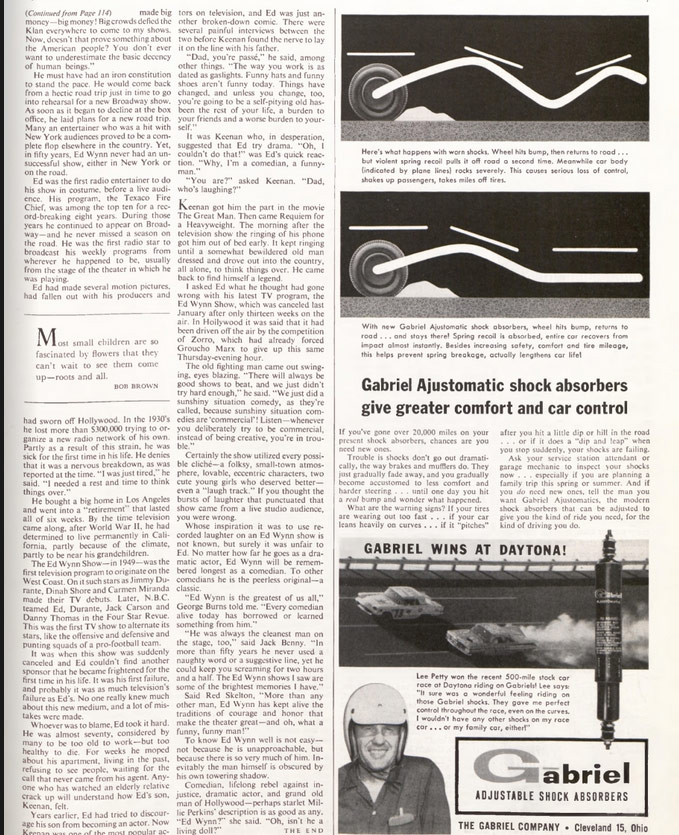Dynasties, Dauntless Drivers, and The Daytona 500
When it comes to sports, certain locations possess an iconic significance in the minds of fans. The mention of Augusta suggests golf’s Masters Tournament. “The Garden” only means the home of the Boston Celtics, while Wrigley is forever Wrigley Field, the friendly confines of the Chicago Cubs. In racing, two cities rise above all the others: Indianapolis and Daytona. Indy is the center of the open-wheel racing universe every May, and Daytona remains the most important race (with the biggest payday) in the world of NASCAR. Sixty years ago this week, the modern version of the Daytona 500 began, and its winner would become the patriarch of one of the most successful family dynasties in sports.
Bill France, Sr. founded the National Association for Stock Car Auto Racing in February of 1948 in Daytona. The Florida city had already built a reputation as a prime spot for land-speed record attempts, and various races had taken place in the city at the Daytona Beach Road Course. France’s innovation was to create an organization that would implement rules and codes that applied specifically to stock car racing, a driving tradition that had grown out of regular vehicles modified for speed by liquor runners trying to outrun the authorities during Prohibition.
By 1959, France and NASCAR inaugurated a new race, the Daytona 500, at the recently finished Daytona International Speedway, a 2.5-mile, four-turn course. It’s remarkable today to think of a major sporting event not being televised, but it’s true; the 41,921 spectators present on February 22 were the only witnesses. That’s too bad, because the rest of the country missed a classic contest with a controversial finish. Though the entire race was run without a caution, things got intense down the stretch.
During the final 30 laps, Lee Petty and Johnny Beauchamp battled furiously for the lead. Petty went ahead with three laps left, and the duo crossed the finish line close enough for a photo finish. Each driver was convinced that he’d won, and in fact, NASCAR officials unofficially declared Beauchamp the winner. However, nearby observers like driver Fireball Roberts had a contrary opinion; it took three days of France studying photos and news footage before he awarded the win to Petty on February 25, 1959. The controversial finish and delay helped expand the NASCAR brand, as the extended time to decide the winner kept the race in the headlines.
Coming out of this race, the popularity of NASCAR would steadily grow, with Daytona remaining its most prestigious race with the biggest purse, annually. It’s part of the Monster Energy NASCAR Cup Series and a crucial piece of the series championship. As a stark contrast to its untelevised beginning, 20 million people now watch the race every year.
After winning that first race, Petty went on to major success in NASCAR. He finished in the top five in points for each of the league’s first 11 seasons and won the Grand National Series championship three times. He also became the patriarch of a racing dynasty, as his son Richard would go on to become NASCAR’s all-time race winner, and his younger son, Maurice, would become a successful crew chief and engine builder for the family’s Petty Enterprises. Richard, nicknamed “The King,” won the NASCAR Championship seven times and took 200 individual races, including a record seven wins at Daytona. Richard’s own son, Kyle, would win eight races in the Monster series and finish in 173 Top Tens. Kyle’s son, Adam, followed the other three into racing, making him the first fourth-generation competitor in modern American sports, but he was unfortunately killed in an accident during practice laps for the Busch 200 in 2000. Maurice’s son, Ritchie, also competed in several races in the 1990s.
Despite the humble (and not entirely legal) origins of stock car racing, the efforts of Bill France, Sr. and an untold legion of drivers, crew members, track owners, promoters, and fans grew NASCAR into a worldwide brand with an audience of millions. The Daytona 500 remains the center of that universe. As long as racing remains popular in the U.S. (and it shows no sign of getting the checkered flag anytime soon), Daytona is going to stay one of the two most important cities in the world of wheels.

Featured Image: The Green Flag flies at the 2015 Daytona 500. (Photo by Nascarking; Wikimedia Commons by Creative Commons Attribution-Share Alike 4.0 International license.)